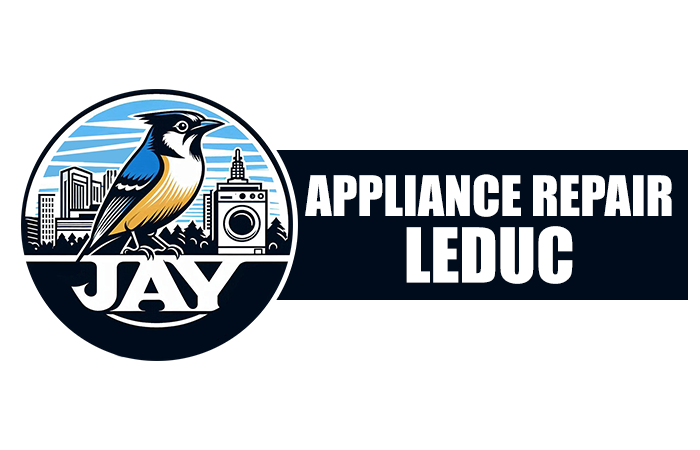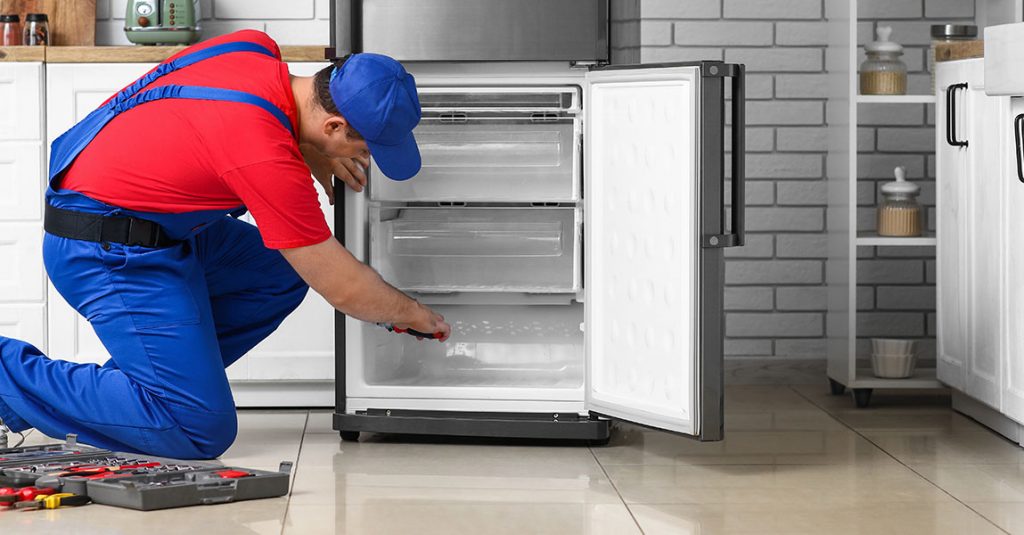Understanding Why Ice Forms in Freezers
When ice begins to coat the walls and shelves inside a freezer, it signals that something is interfering with the natural defrost process. Normally, freezers use a built-in cycle that melts away frost before it becomes a problem. However, if this cycle fails, the moisture in the air freezes onto the coils and spreads to other areas. As a result, you may notice thick sheets of ice or frost that are difficult to scrape away.
We need to recognize that ice is not just a cosmetic issue. It can reduce airflow, block vents, and trap cold air in the wrong spots. Consequently, the appliance works harder, which may increase energy use and shorten its life. That is why spotting early ice buildup can help prevent more serious problems with the defrost system.
Common Defrost System Components
Every freezer has several parts that keep frost under control. Firstly, there is a timer or control board that schedules the defrost cycle. Secondly, a heater warms the coils just enough to melt away frost without affecting the stored food. Finally, a sensor or thermostat checks the temperature to make sure the heater turns on and off at the right time.
If one of these parts fails, the entire process suffers. For example, when the heater stops working, frost piles up quickly. On the other hand, if the sensor breaks, the heater may not turn on at all. To clarify, even a small malfunction in one part of the system can cause heavy ice buildup that spreads across the freezer.
Signs of a Defrost System Failure
Ice in a freezer is one clear warning sign, but there are other signals to watch for. You might notice water pooling at the bottom after the cycle runs. That usually means the drain is blocked by ice. Likewise, if food at the back of the unit starts to thaw while other areas remain frozen, the airflow may already be restricted.
Another symptom is when the freezer runs constantly without cycling off. This often means the coils are covered in frost, forcing the motor to keep running. In the same vein, strange noises such as hissing or clicking can appear during a failed defrost cycle. Paying attention to these small details helps us pinpoint the cause before it develops into a major breakdown.
How Ice Affects Freezer Efficiency
Thick frost looks harmless, but it creates a real barrier to proper cooling. Coils covered in ice cannot release or absorb heat efficiently. Therefore, the compressor needs to run longer to maintain the right temperature. Over time, this extra strain not only wastes electricity but also wears out the motor faster.
Our team has seen freezers where frost caused doors to stay slightly open. When that happens, warm air rushes in, and the buildup grows even faster. In other words, the problem feeds on itself until performance drops sharply. For anyone concerned about efficiency, ice is more than an inconvenience. It is a direct drain on both power use and long-term reliability.
Practical Steps to Manage Ice Buildup
Addressing ice begins with simple checks. Start by inspecting the door gasket to make sure it seals tightly. If warm air leaks inside, frost will form more quickly. Next, look at the air vents and ensure food is not blocking circulation. During cleaning, pour a little warm water into the drain line to clear hidden clogs.
We can also unplug the appliance and let it thaw fully when ice is already thick. After that, wipe away the water and restart the freezer. However, this is only a short-term fix. If the defrost system has failed, the frost will return in a matter of days. For lasting results, it is best to address the underlying part that is not functioning as it should.
For anyone who is unsure, it helps to look into professional freezer repair in Leduc. Skilled technicians can test the heater, sensor, and control board directly, saving time and reducing guesswork.
When to Call for Repair Services
There are times when a homeowner can manage small frost issues. For instance, wiping moisture off containers or ensuring the door closes properly often helps. However, repeated or rapid ice buildup is rarely a problem that simple cleaning can fix. At that stage, it usually points to a failed defrost part that requires replacement.
Trying to handle wiring or heating elements without training carries risks. Moreover, using temporary fixes like chipping away ice with sharp tools can damage the interior. To avoid those risks, it is wise to rely on reliable appliance repair services in Leduc. With the right support, we can restore efficiency and extend the life of the freezer.
Preventive Care to Reduce Ice Problems
Prevention always makes life easier than repair. Keeping the door closed as much as possible helps reduce warm air intrusion. Organizing food neatly ensures air can flow freely across the shelves. We should also check that the appliance is level so water drains away properly during each defrost cycle.
Regular cleaning around the gasket and vents removes dust and debris that might trap moisture. Similarly, scheduling seasonal checks gives us the chance to catch early wear in sensors or heaters before they fail completely. Simple habits like these make a big difference in lowering the chances of thick frost building up again.
If questions remain or more guidance is needed, we can always contact us to speak directly with a technician who can walk through the best next steps.
Extra Tip: Watching Freezer Load
One often overlooked factor in ice buildup is how full the freezer is. Overloaded shelves block airflow and force cold air to stay in pockets. As a result, condensation freezes in those areas. On the other hand, running a nearly empty freezer can also create excess frost, because there is too much open space for moisture to move around.
Our team recommends keeping the freezer about three-quarters full. That balance allows air to circulate while the stored items hold cold temperatures more evenly. In the long run, this small adjustment lowers the risk of ice buildup and reduces stress on the defrost system.
FAQ
Why does frost return so quickly after defrosting?
Frost that comes back within days usually points to a failed heater, sensor, or blocked drain rather than just normal moisture.
Can leaving the door open for a few minutes cause ice buildup?
Yes, even short openings allow moist air to enter. When that moisture hits the cold coils, it freezes and can start the cycle of ice growth.
Is it safe to scrape ice off with a knife?
No, using sharp objects can puncture the liner or damage coils. It is better to thaw with warm water or let the freezer sit unplugged until the ice melts.
What happens if the defrost timer fails?
If the timer or control board stops running, the heater will not cycle. That leads to continuous frost that worsens over time.
How often should the defrost system run?
Most systems are designed to activate every 6 to 12 hours, though the exact schedule varies by model. If ice appears, the system may not be working as intended.

